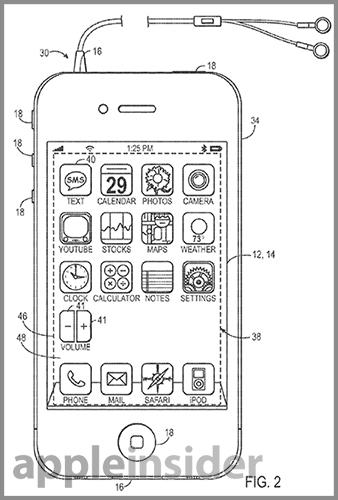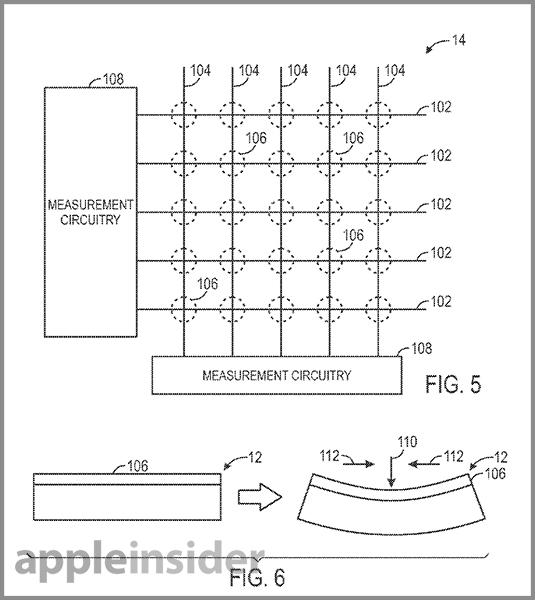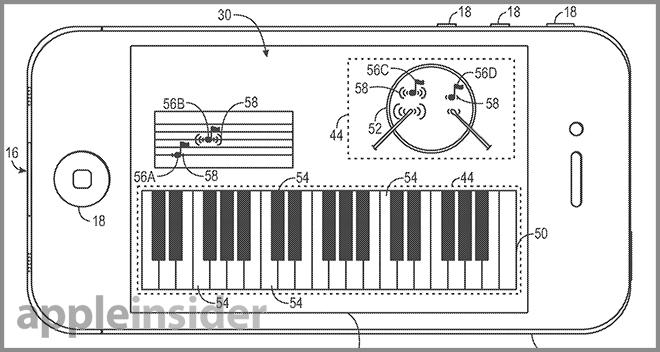Apple investigating devices with 'pressable' flexible displays
Last updated
The US Patent and Trademark Office on Thursday published an Apple patent application that could lead to devices that use flexible displays which users can depress as a mode of input, adding another dimension to UI interaction.
Apple's "Embedded force measurement" filing describes a system in which a force detection sensor layer is deployed atop or within a flexible display, allowing a user to press down on the screen as a secondary form of input.
Currently, Apple's multitouch displays as seen on its iOS devices work in a largely planar, or two-dimensional, environment thanks to gestures like swiping and tapping. What the invention is proposing is a third dimension that takes the form of motion on the z-axis of said display.
According to the embodiments outlined in the application, methods for detecting force, like exerted pressure, on a flexible display are turned into "touch force input" for a user interface. In other words, when a user pushes down on a flexible display, the device will detect the pressure and respond accordingly.
In operation, the flexible display can have on or more flex regions coupled to a force detection system. Any display technology can be used, though the patent filing notes OLED as a suitable choice. This is most likely due to the format's ability to be easily fabricated using bendable plastic substrates.
It is noted that flexible areas of the display can be limited to high-activity zones where users are most apt to interact with the UI, while less-used areas can remain less flexible to retain structural integrity.
To create these regions of flexibility, an external layer sitting on top of the display can be strategically thinned using various manufacturing methods. Sitting beneath the external layer is the force measurement layer, which tracks flexure via any number of magnitude detectors, including strain gauges and optical sensors, among others. It should be noted that the measurement layer can also be embedded in the OLED substrate or any other suitable portion of the display.
Certain embodiments call for the detection system to recognize when a user exerts force on the display, at which time one or more layers of the screen may flex inward. The resulting deflection can be determined by the force detection system, which measures the location and magnitude of the flex and sends an appropriate input signal to the device's processor.
Some embodiments allow for the UI to function differently depending on how much pressure is applied. For example, a device's volume can be adjusted at different rates depending on applied force. As a function of adjustment, levels such as "low, medium, and high" can be enabled, with the force detection system determining the rate based on magnitude thresholds.
The patent filing offers another example in GarageBand. Such an app could take advantage of the force-sensing technology when interacting with virtual instruments. A user may press down on a piano keyboard with increasing force to create increasingly loud notes.
Finally, in order to ensure consistency, the baseline thresholds for capacitance and resistance as they apply to the measurement layer can be reset daily. This allows for extended use even if the flexible layer becomes slightly deformed over time.
While not specifically mentioned in the patent language, the input system would be ideal for small form factor devices, like the much-rumored iWatch. Multitouch panels are useful, though at sizes small enough to fit on a wrist, alternative types of user interfaces may be required.
Apple's force measurement patent application was first filed for in 2011 and credits Stephen Brian Lynch, Benjamin Mark Rappoport, Fletcher R. Rothkopf, Paul Stephen Drzaic and Scott Andrew Myers as its inventors.
 Mikey Campbell
Mikey Campbell
















 Amber Neely
Amber Neely
 Thomas Sibilly
Thomas Sibilly
 AppleInsider Staff
AppleInsider Staff
 William Gallagher
William Gallagher
 Malcolm Owen
Malcolm Owen
 Christine McKee
Christine McKee










2 Comments
This is new?
[quote name="Ireland" url="/t/157761/apple-investigating-devices-with-pressable-flexible-displays#post_2335655"]This is new?[/quote] The notion that Apple would give a rats turd about pressure sensitivity is. Folks are pretty much on the band wagon that they don't and never will. Which is why didn't to license up some Wacom tech like Samsung did. Nice to see that they have been thinking about it, long enough to have something to file in Nov 2011